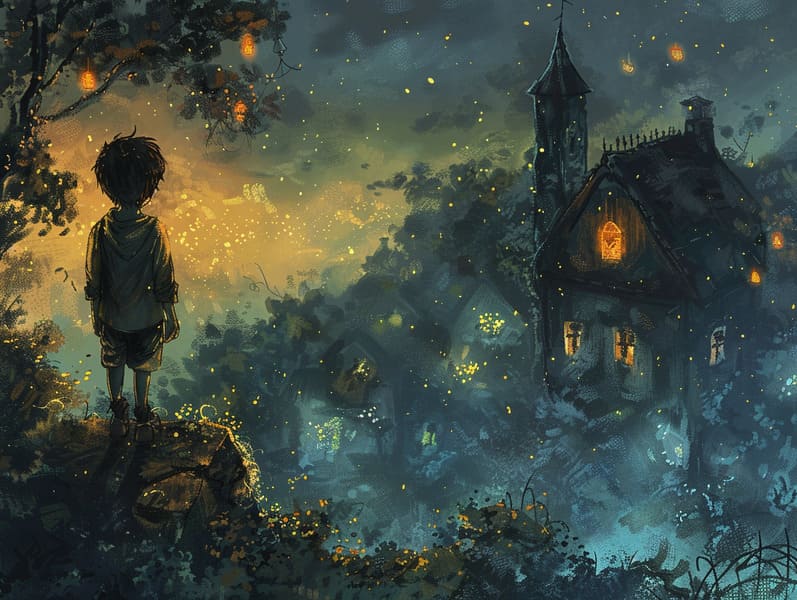Uncovering the Past of Fairy Tales with the Timeless Delight.
Uncovering the Past of Fairy Tales with the Timeless Delight.
Blog Article

Fairy tales have historical significance. These tales have been spoken from one generation to the next far before they were ever recorded. They arose from a variety of backgrounds, including American traditions. They were initially narrated among grown-ups, often carrying themes and messages pertaining to the societal norms and beliefs of the time.
Jacob and Wilhelm Grimm, the two Grimm brothers, were among the first to collect many of these beloved narratives. Their anthology, "Grimm's Children's Stories," included narratives like "The Little Glass Slipper," "Little Brother and Little Sister," and "Snow White," which have since become essentials in the world of beloved fairy tales. Similarly, Hans Christian Andersen's imaginative tales, such as "The Sea Maid," and "The Duckling that Could," have captivated hearts worldwide, solidifying their place in the pantheon of classic fairy tales.
Despite their ancient origins, these stories remain as relevant as ever, especially as children's bedtime stories. These fantastical tales are now available in multiple formats, including richly illustrated books, captivating animations, and online fairy tales.
Their unwavering allure can be connected to several captivating elements:
Valuable Lessons: Old fairy tales often convey important moral lessons. Tales like "The Boy Who Cried Wolf" teach the benefit of sincerity, while "The Race of the Tortoise and the Hare" point out the virtues of tenacity and meekness. These tales offer little ones clear distinctions between correct and incorrect, molding their moral compass in a subtle yet lasting way.
Compassion and Knowledge: Timeless fairy tales frequently illustrate protagonists facing tests and troubles, fostering readers to identify with their struggles and rally behind their triumphs. For instance, "The Story of Beauty and the Beast" points out the virtue of looking past the exterior to acknowledge the real person of a character, building sympathy and knowledge.
Cultural Perception: Many classic fairy tales are steeped in the cultural contexts from which they sprang. Understanding these tales can provide captivating looks into different beliefs, strengthening a sense of global understanding and discernment.
Fantasy and Imagination: The fantastical elements in ancient fairy tales—spells and potions—engender children’s creative minds. These fairy tales take readers to imaginary realms, awakening fantasy dreams and a sense of marvel that persists a lifetime.
Classic fairy tales are not only alluring but also enlightening. They act as whimsical tools in strengthening various cognitive and affective skills in little ones. When ancient fairy tales are voiced, they cultivate language acquisition by presenting new phrases and sophisticated sentence structures. This practice also promotes hearing abilities and mindfulness, as little ones listen intently, eager to see what happens next.
Furthermore, contemplating the themes and characters of classic fairy tales can promote intellectual skills and cognitive skills. Kids are led to pinpoint patterns, predict happenings, and know cause and effect. These explorations also further kids utter their thoughts and feelings, cultivating their emotional intelligence.
In today’s online age, the prevalence of internet fairy tales has made these stories more accessible than ever. Internet sites and digital apps make available broad selections of timeless fairy tales that can be browsed or listened through anytime, anywhere. Fairy tales recited are particularly sought after, making available an interactive method for the young to delight in these bewitching tales. Narrated books and narrated videos guide characters and settings to life, often supplemented by charming background sounds and harmonies that boost the narrative adventure.
The lasting appeal of traditional fairy tales lies in their ability to shift to new eras while retaining their core messages. Contemporary reinterpretations of these fairy tales often feature more multicultural characters and modern settings, making them relatable to today’s audience. However, the fundamental themes of fearlessness, kindheartedness, and impartiality remain unchanged, continuing to strike a chord with listeners of all ages.
Old fairy tales also offer a sense of protection and understanding. They impart upon a organized narrative with a apparent beginning, middle, and end, often closing with the finalization of conflicts and the triumph of goodness over badness. This predictability can be encouraging for the young, delivering a sense of firmness in an dynamic world.
Traditional fairy tales continue to enthrall and inform new generations, maintaining their appeal and importance in modern society. As children's night stories, they extend a perfect blend of charm and enlightenment, backing moral values, empathy, and creativity. The availability of internet fairy tales and the well-liked nature of fairy tales read out loud secure that these traditional narratives remain reachable to new generations.
By conserving and broadcasting these fairy tales, we continue to praise the rich tapestry of fables and cultural heritage. Whether you are enjoying a beautifully illustrated book, viewing a web-based collection, or listening via an read-aloud story, the captivation of traditional fairy tales is always within reach. These tales teach us of the invariable strength of storytelling and its ability to draw us together across generations and cultures.
If you are browsing a vividly illustrated book, more info discovering a virtual library, or listening on an read-aloud story, the grace of classic fairy tales is always within reach.
These stories reveal of the timeless power of fairy tales and its ability to tie us across time and space, forging a link that captivates and teaches alike.